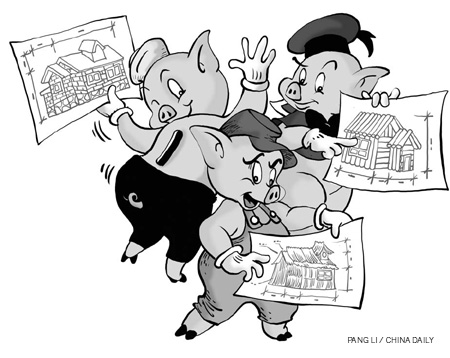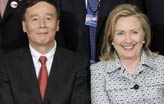Op-Ed Contributors
Similarity of a growth model
Updated: 2011-05-20 08:01
By Yukon Huang (China Daily)

China's economic performance is a subject of heated debate. Admirers see in China a country which has been growing at double digits and has lifted 500 million people out of poverty. They talk about a new growth model built around the "Beijing Consensus" which stresses the role of the state in directing resources. Critics see a repressed financial system that encourages wasteful public expenditures and exacerbates global trade imbalances. So they argue that the "Washington Consensus", which favors a more market-oriented model, remains the preferred option.
Which of the two is closer to the truth? Neither. But there is a way to interpret China's development that sheds some light on its economic approach. That model is the one used by multilateral development agencies, including the World Bank and the Asian Development Bank.
|
||||
Developing sustainable solutions to these problems demands that developing countries grow more rapidly and in ways that preserve the global commons, from protecting the environment to making social services broadly available. Moreover, the actions of development banks encouraging growth is justified by market imperfections - which lie at the heart of underdevelopment - including limited information on risks and weak economic institutions that are unable to secure and allocate resources effectively.
The World Bank provides subsidized loans to developing countries that in turn lend the funds to local authorities and enterprises. Such assistance enables developing countries - whose fragile fiscal and banking systems do not give them access to commercial lending - to support investments with high social returns but whose risk-adjusted return is perceived by markets to be unacceptably low, such as social infrastructure.
The subsidies on the loans come from budget transfers or government guarantees that allow the World Bank to borrow in international capital markets on favorable terms because repayment of their loans is guaranteed - first, by the recipient governments and, second, by the bank's shareholding governments. Thus, despite skepticism of the viability of loans to countries as diverse as Sudan and Afghanistan, its financial soundness has rarely been questioned.
Specials

Comments on S&ED
The China-US Strategic and Economic Dialogue in Washington earlier this month achieved some remarkable results.

The song dynasty
There are MORE THAN 300 types of Chinese operas but two POPULAR varieties are major standouts

Sino-US Dialogue
China and the US hold the third round of the Strategic and Economic Dialogue from May 9-10 in Washington.



